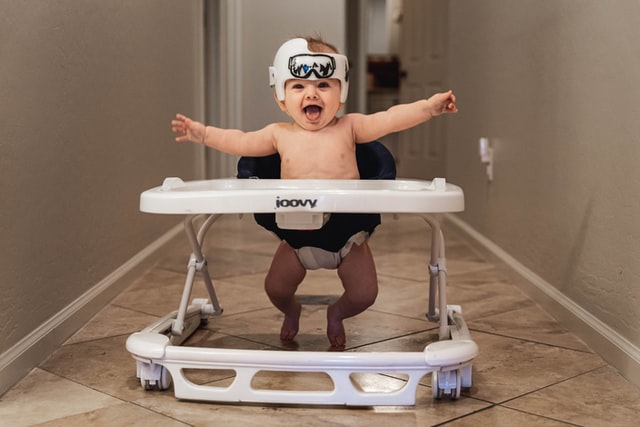Positional plagiocephaly, also commonly known as flat head syndrome, describes a flat spot on the side or back of a baby’s head. Many parents identify a flat spot on their babies’ heads early on and, after seeking medical advice, can receive a diagnosis of positional plagiocephaly. If you’re a new parent wondering what this might mean for your child, you can learn more about this cranial deformity and its management below.

What Causes Positional Plagiocephaly?
Before learning about management techniques, such as a baby head shape helmet, parents may want to understand what causes positional plagiocephaly in the first place. The most common cause of this condition relates to sleeping positions, with infants that spend several hours on their backs each day in their beds, car seats, bouncy seats, and strollers being more susceptible than others.
Premature babies may also be at risk of having a flat spot on their head, particularly as their skulls are softer than babies born at full-term. As many of them stay in neonatal intensive care units, they might also spend more time on their backs during those early days due to their complex medical needs.
However, the cranial deformity can also develop in the womb, especially if a twin or mother’s pelvis puts pressure on the baby’s skull during development. In less common cases, a neck condition known as torticollis, which makes it hard for an infant to turn their head, might also put a baby at risk of developing it.
Cranial Remolding Helmet
If your baby’s doctor identifies a large flat spot during regular wellness checkups, and it doesn’t seem to be getting better on its own, they might recommend a cranial remolding helmet by age four months. Treatment is typically most effective between four and six months but ineffective after age one once your baby’s fontanelles close.
If a medical professional recommends a cranial remolding helmet, your baby might need to wear the helmet for 23 hours a day for several months to correct the problem. These helmets feature foam liners set within plastic shells and are adjustable as your child’s head develops.
Repositioning Techniques
Alongside or instead of a cranial remolding helmet, your doctor might recommend repositioning techniques to give your baby’s skull a chance to correct flat spots independently.
Tummy Time
Tummy time is an essential developmental technique for parents to help their babies develop motor skills and build strong shoulder and neck muscles. However, it might also help prevent positional plagiocephaly. Wait a reasonable amount of time after your baby has been fed to avoid digestive discomfort, and supervise their tummy time daily.
Alternate Positions
You and your baby might both have positional preferences during feeding, cuddling, and sleeping. However, changing these positions might reduce the risk of flat spots. Breastfeed from both sides, place them down in their crib in different positions, and prioritize cuddling time to allow breaks from strollers and carriers.
Positional plagiocephaly is typically an entirely correctable cranial deformity. If you suspect your baby has a flat spot that doesn’t seem to be getting any better, talk to a medical professional about cranial remolding helmets and techniques you can try to help your baby’s skull develop. You may be surprised at just how much help and support you have to correct the problem.
















Add Your Comment